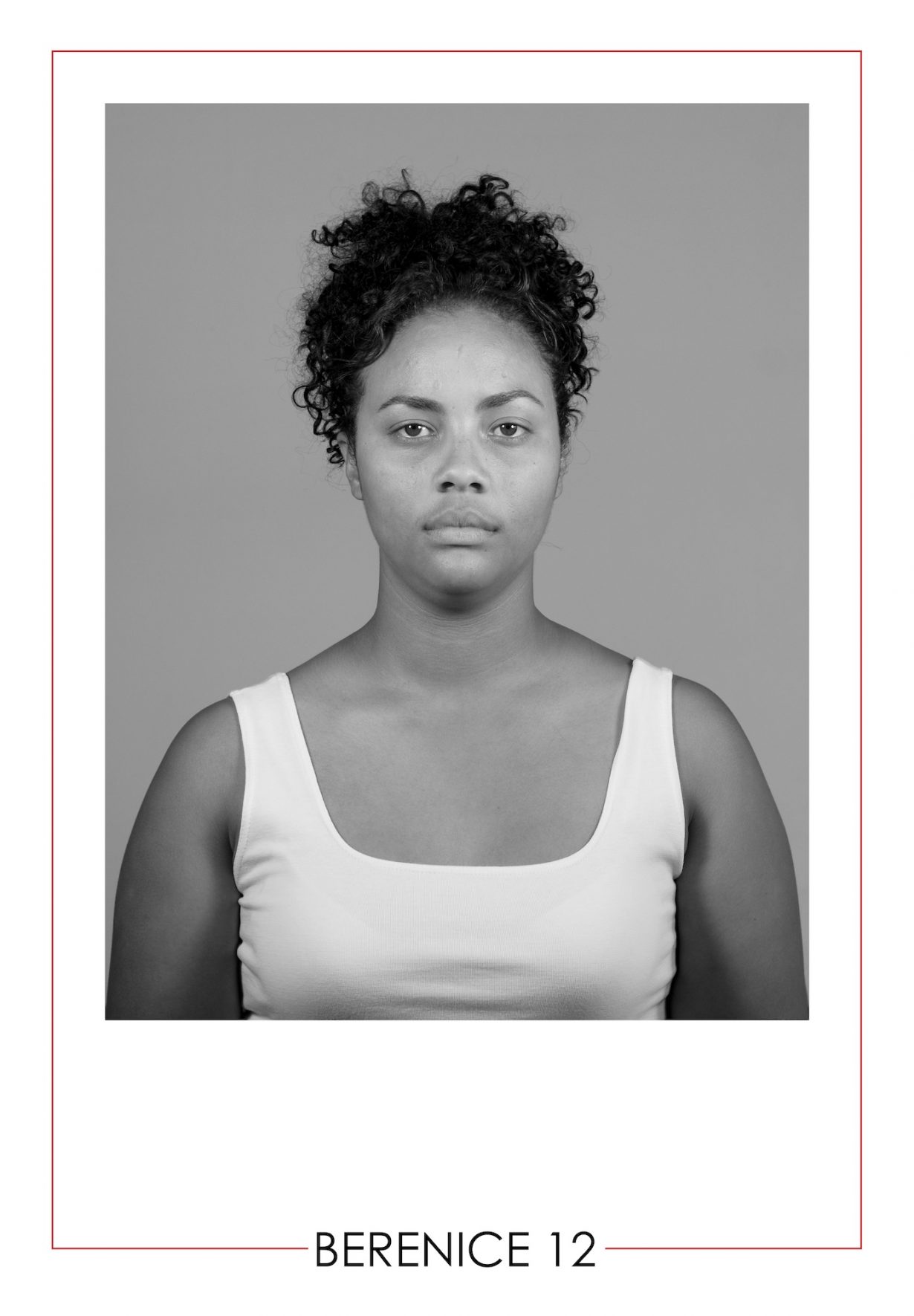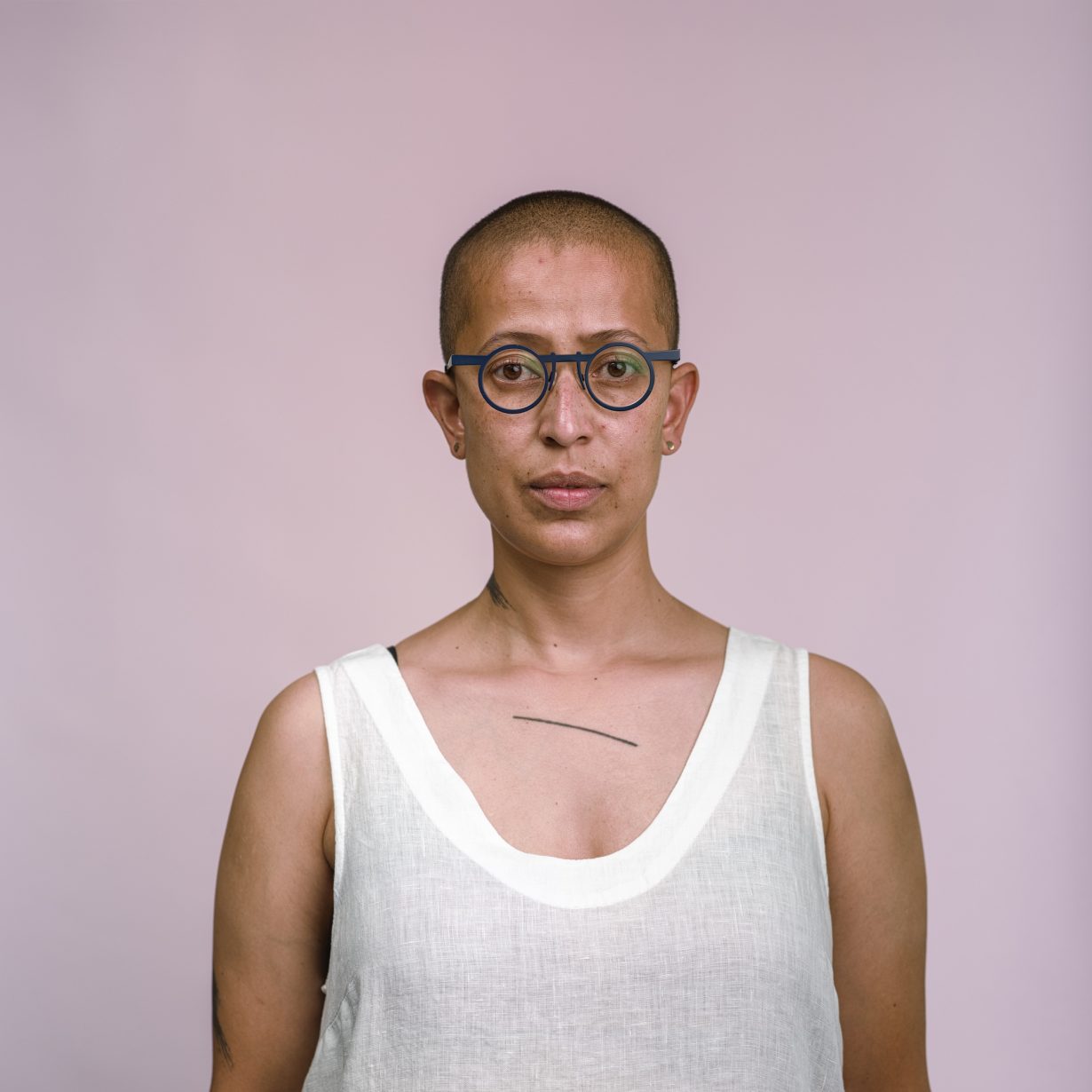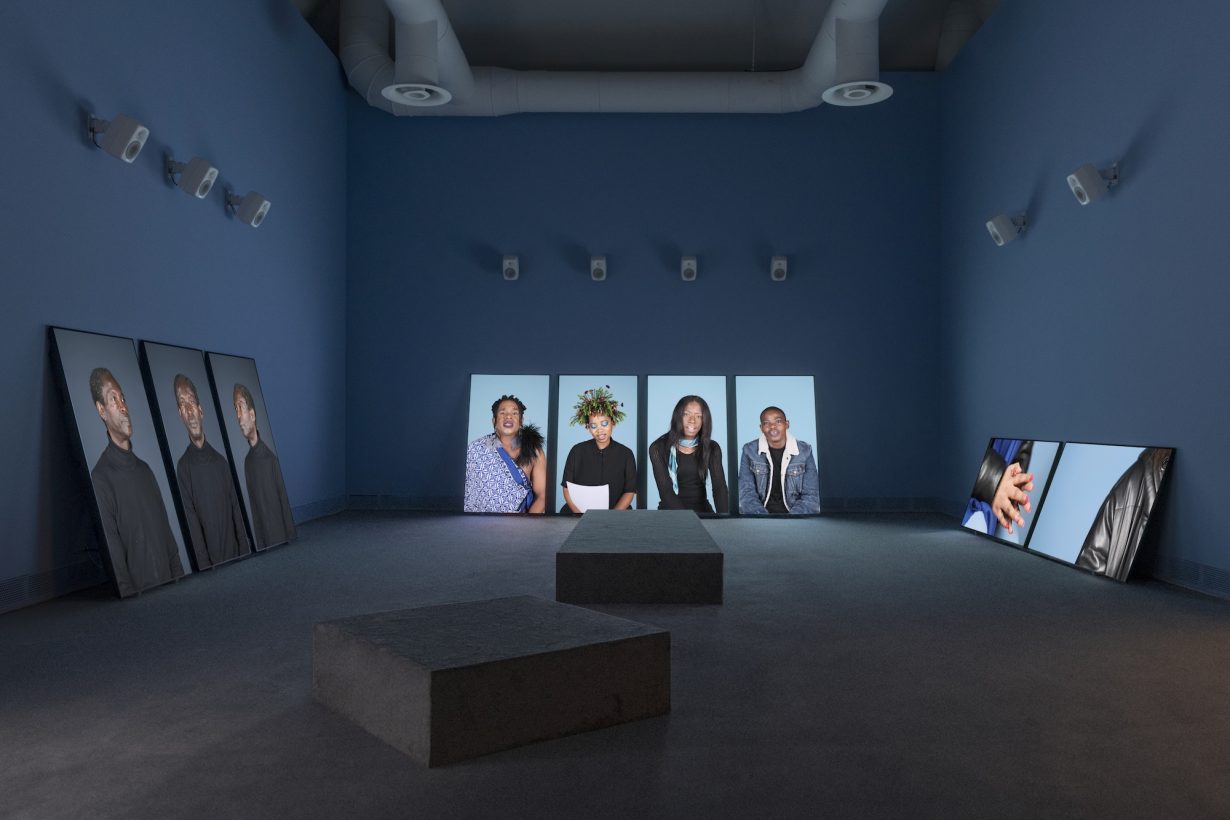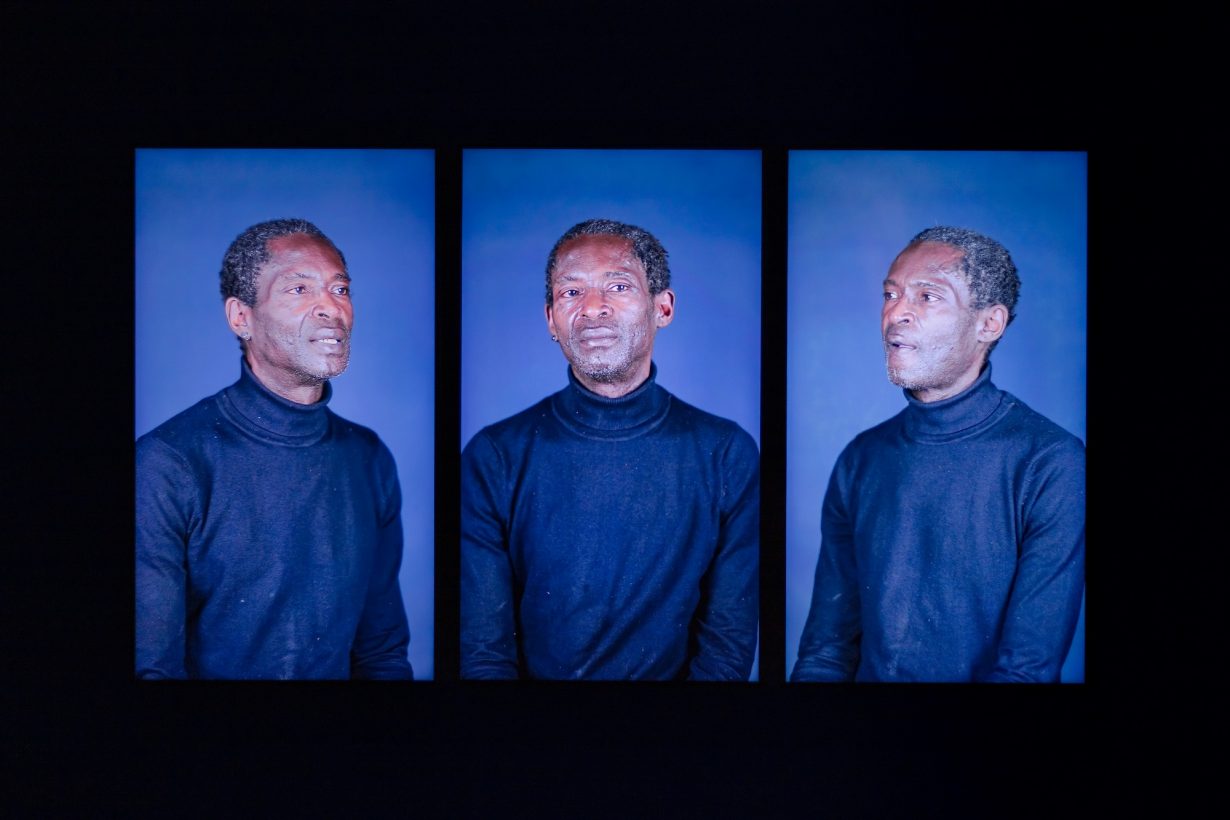The South African artist’s works – a highlight at last year’s Venice Biennale – seek to reframe acts of mourning and of remembrance

In 2010, South African artist Gabrielle Goliath created the photographic portrait series Berenice 10–28 (2010), inviting 19 women to stand in for the artist’s childhood friend, who had been killed in an act of domestic violence on Christmas Eve, 1991, in Kimberly, where Goliath was born. Each portrait represented one year since Berenice’s death, with Goliath later inviting another group of women to produce Berenice 29–39, in 2022. The project forms an anchor point in Goliath’s expansive, multimedia practice: a sustained and careful exploration of what she has described as “the problematic of the representation of violence in art”, and the question of how to speak against racialised, sexualised and gendered violence without retraumatising, fetishising or objectifying survivors.
Works like Roulette (2014) followed, in which the recording of a revolver being shot once every three hours cuts through the static playing on a pair of headphones: a frequency that was updated from the original six hours in keeping with 2017–18 data released by the South African Police service showing how often, statistically, a woman in South Africa is murdered. And Elegy, a long-term commemorative performance-project in which seven opera singers collaborate on maintaining a single tone over the course of an hour, by lining up behind a podium on which each participant, in turn, sings until they can no more. Defined by an act of collective, ritual mourning, Elegy was initiated in 2015 to honour Ipeleng Christine Moholane – a nineteen-year-old journalism student who was raped and murdered in Tembisa – after Goliath heard the student’s father speak about her death on the radio. ‘At this lowest moment, it must have taken so much courage for him to make himself publicly heard and to converse with others about this tragedy in an effort to say, “This has to come to an end”,’ Goliath told artist Amadour in an interview for The Brooklyn Rail in 2022. ‘I began envisioning an artwork to counteract this abhorrent but normative brutality. How could I create something to refuse this order of violence – a space for others to participate and mourn?’

Iterations of Elegy have followed, including one for Noluvo Swelindawo in 2017. Swelindawo was killed in 2016 by Sigcine Mdani, whose sentencing acknowledged the systemic misogyny, femicide and queerphobia that drove his actions – Swelindawo was in an openly lesbian relationship, and her partner had to go into hiding shortly after her murder. In 2024, the year Goliath staged an Elegy performance as part of the Venice Biennale to honour victims of the Ovaherero and Nama Genocide, the artist turned ten documented Elegy performances, each a tribute to a murdered woman, into a ten-channel video installation, creating something of a chorus whose rhythms are defined by the point in each video at which singers switch places. That choral form was previously crystallised in the video installation Chorus, which Goliath created in 2021 in response to the rape and murder of Uyinene Mrwetyana, a nineteen-year-old student at the University of Cape Town, whose killer took advantage of his job at the local post office to lure her back to the precinct – ostensibly to collect a parcel – after hours. The incident stirred the ongoing struggle against gender-based violence and femicide in South Africa, prompting the government to initiate a ‘National Strategic Plan’ for the crisis; only for Goliath to witness a return to the ‘incremental and terrifying reality of this crisis as norm, as an everyday of permissible violence’.
Through their compositions and dedications, Chorus and Elegy both preserve and sustain this ongoing call for collective justice in South Africa and beyond, by refusing to let Mrwetyana’s name, and that of so many others, fade. In the case of Chorus, two videos are projected onto standing walls that face each other. One shows a performance of a polyphonic hum by the University of Cape Town Choir, many of whom were Mrwetyana’s classmates; the other shows an empty stage, whose back wall features a list naming the women, children and LGBTQ+ victims of femicide in South Africa starting from August 2019, when Mrwetyana was killed, to October 2022. Also among the names are those of the men who died trying to protect the victims, an important feature in Goliath’s interrogation. ‘For me, this circles back to the question of men and how to reckon with this violence,’ she told Amadour. ‘It’s about the order of modernity, the modern subject, the historical beneficiary of social life as we know it, and how it orders the world.’
Goliath confronts that question of responsibility – in which everyone is implicated in gender-based violence whether they have directly experienced it or not – by conjuring potent and insistent sites of collective reckoning that are grounded in embodied transmission; something that the chorus as a structural form embraces as a collective act. It was ‘a critical conceptual and poetic decision… to make this work collective,’ Goliath tells Amadour. ‘When one choir member runs out of breath and cannot sing anymore, there are other voices to carry on the lament. In this way, it’s not only about song, as such, but breath – a collective offering and holding of breath.’

The idea of the breath, or many different breaths, connected across time and space, is amplified in Personal Accounts (2013–), an ongoing transnational multicycle video- and sound-installation project whose first iteration was included in a 2014 exhibition at Goodman Gallery in Johannesburg. That five-channel video installation presented moving portraits of five women that were edited to show them expressing only the nonverbal utterances and expressions between their testimonies of domestic violence. Against a white background, their faces fill the screen as they look into the camera; their images visibly splicing in rhythm with where the film was cut and stitched according to where words begin and end.
Goliath premiered a new cycle of Personal Accounts at the 60th Venice Biennale in 2024, with three iterations adopting the same format – front-facing video portraits edited to cut out spoken words. Deinde Falase is a three-channel video and sound installation featuring the titular news presenter who announced the signing into law of the 2014 Same-Sex Marriage Prohibition Bill in Nigeria and who became an asylum seeker in South Africa soon after. Composed as a triptych, Deinde sits against a blue background and angles his body to face inwards on the screens bordering the central ‘panel’, where he faces the camera, addressing – per the work’s introduction – a different person in each frame: his late mother, who never learned of his sexuality; his elder brother, who lives in America and supports him; and his younger brother in Nigeria who does not. Lago di Como is a 16-channel installation anchored to the Como branch of Telefona Donna, a support centre offering community and legal counsel to more than 250 cases of gendered violence and sexual assault daily. Against a blue backdrop, nine women from around the world and from different walks of life living in and around Como are shown across a constellation of six screens, some paired and others solo. In some cases, the women are filmed in a documentary-interview style, sitting alone; in other cases the camera zooms in on details like their hair, avoiding faces to preserve anonymity. Each testimony – a composition of sounds, gestures and subtle twitches – is disarmingly direct. The sucking in and expulsion of breath; eyes flushing red; a wry smile; then, tears.
Completing the trio in Venice was the four-channel There’s a river of birds in migration, whose title draws from a liturgy scripted, composed and performed by South African artist and activist Treyvone Moo, the matriarch of House of Diamonds, a safe house addressing LGBTQ homelessness in South Africa. Four vertical video screens leaning against a wall each show a figure against a marine blue background – Treyvone, draped in a blue patterned fabric, Maneo, whose head is crowned with a spray of flora, Sapphire and Hopewell, their names appearing both in the work’s introduction and in a dedicated Personal Accounts online portal, where their stories and reflections on trans survival in Johannesburg are held in community with contributions by individuals who participated in different cycles from around the world. As the only one who barely receives a vocal cut due to the rolling hum of their song, Treyvone’s voice acts like a sonic thread connecting with every breath in the room, wherever the work is shown: a metonymic constant that tells a deeply collective story – a fact that becomes more apparent as the project grows, and Goliath creates context-specific cycles for the places where Personal Accounts travels.

For the 2024 biennial Jaou Tunis, for example, where Goliath presented Personal Accounts at the B7L9 Art Station, the artist created a new work, Salle d’écoute (2024). The three-channel installation was filmed in a listening room in downtown Tunis, founded by L’Association Tunisienne des Femmes Démocrates in 1993 to support women facing gendered violence. Shown in a closed-off space, screens display a video of that listening room’s curtain, which stands in for footage of the participants, honouring their wish to remain anonymous and rerouting attention to the sounds reverberating around the room: breathing, weeping, sometimes chuckling. For an exhibition at Talbot Rice Gallery in Edinburgh that followed, Goliath produced the 22-channel Mango Blossoms (2024), based on stories of survival and repair from women and gender-diverse individuals in and around Edinburgh. Portraits ripple with splices across four screens positioned around a room, two of which reach the width and height of the walls. Loops show faces alone or figures sitting on their chair, coupled with cuts that zoom into hair, clothes, sometimes hands and nothing else. In both cases, Treyvone Moo’s song, emanating from There’s a river of birds in migration close by, is ever present, its resonance stitching together a tapestry of entangled bodily and vocal utterances where meaning builds through scales of relation.
What emerges is a project composed as an epic and ongoing transnational discussion expressed in nonverbal vocalisations rather than language, which so often fails to capture the traumatic weight that racial, sexual and gender-based violence can heave onto those who have been subjected to it, or to confront a painfully common struggle that transcends borders and stretches well beyond the history of the nation-state and Western imperialism – even if the present day’s violence is intrinsically tied to that legacy. This, in a nutshell, defines mourning as a living practice, or as Goliath puts it, the lifework of mourning – that is, to hold what comes in the wake, which for Goliath involves reaching for ‘a different kind of work’ that goes ‘against what violence does’. As described in the Talbot Rice exhibition text, ‘Goliath is calling for a different kind of relation – a politics of love and avowal that doesn’t disregard intersectional difference, contextual specificities, or the incommensurability of suffering, but asks for more collective, embodied, survivor-centric ways of coming to know, hear and recognise each other.’

This song is for… (2019) is one such call: a sound, video and text installation created with rape survivors who each shared a personally significant song, written reflection and colour, resulting in videos of women- and gender-queer-led musical ensembles performing those songs in films tinted with monochromatic hues, alongside an accompanying album. Embedded into each song’s arrangement is a purposeful glitch reminiscent of the sound a scratched LP record makes when it’s played: a sonic interpretation of traumatic recall, where a thought or feeling becomes stuck. In 2023 Goliath returned to the form of the acoustic spiral with These three remain, a monumental 12-channel sound installation commissioned by Sharjah Biennial 15. Twelve speakers installed in an open space enclosed by stone walls on the grounds of the Sharjah Art Foundation emitted the sounds of more than 7,000 samples of the word ‘love’ drawn from playlists compiled by the artist and her brothers, as lights transformed the enclosure into a monochrome of rotating pastel hues: a meditation on an enduring and undeniably universal emotion, even if some only experience its shadow opposite. Love, after all, can be a haunting, as the poem that accompanies the work’s documentation on Goliath’s website suggests: something left behind, something to be recovered.
Goliath’s practice is grounded in that recovery, with works that test how art can create space for trauma to unfold and unfurl – to be worked through relationally, laterally, personally – in the name of restoration through recognition. That is, to hold space for witnessing as much as to bear witness; not through language nor the intellectualisation of the horrors of systemic violence, but through the complex web of emotions and states that define its ever-shifting and far-reaching textures, both within the body and without. The point, as Goliath has suggested, is about acknowledging the contexts and histories that have conditioned humans into systems that have structured our most intimate relations. “Racialised, gendered and sexualised violence is transnational, is global, is deeply entangled with histories of colonial modernity, is terrifyingly normative, and enmeshed within ordinary life,” Goliath has pointed out. “This is not about a distant suffering.” To coax out that proximity, to close the distance, is the work.
Stephanie Bailey is a writer from Hong Kong
From the April 2025 issue of ArtReview – get your copy.